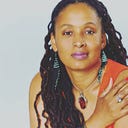Member-only story
After Years of Searching, I Finally Found My Black Indian Community
The blood of two peoples runs in us, and we want everyone to know we are still here
 Dropping off a book at the Hampton Public Library, I glance at the counter and see a licorice-red flyer that says, “Come Join the Weyanoke Association: African Americans Honoring Our American Indian Heritage.” I look around. Is someone playing a joke on me?
Dropping off a book at the Hampton Public Library, I glance at the counter and see a licorice-red flyer that says, “Come Join the Weyanoke Association: African Americans Honoring Our American Indian Heritage.” I look around. Is someone playing a joke on me?
In August 2004, my daughter and I moved to Hampton, Virginia, for my job at a Historically Black College. Our first year was hard and lonely, and we desperately missed our communities back in Los Angeles and in the Los Padres National Forest.
“I hate it here,” Afiya said at least once a week as she tried to make friends in the ninth grade. I tried to placate her with the proverbial “give it time” talks, but I had moved her away from her friends at 14, just as she was about to start high school. We had many “I hate it here” fights, but the truth was I was having a hard time finding my people, too. I missed the African American, African-centered communities, and the American Indian groups that had become my family over the years. This flyer seemed to be a sign: Little did I know I was about to find a space where both sides of my heritage combined.

